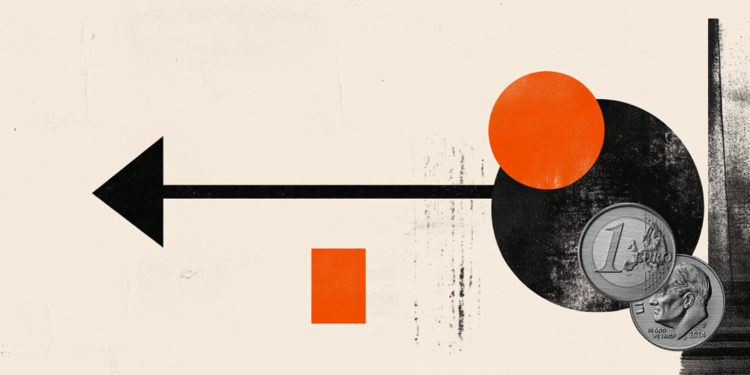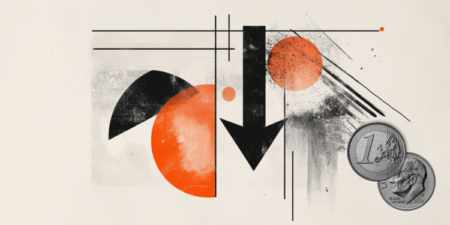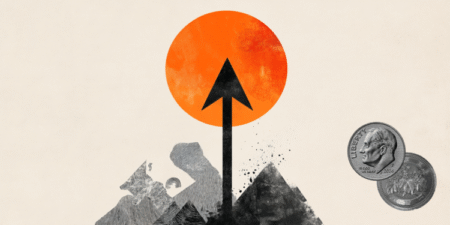- EUR/USD trades sideways around 1.1760 in a holiday-thinned trade.
- Better-than-projected US NFP data has offered some relief to the US Dollar.
- Risks to inflation undershooting the ECB’s 2% target have escalated amid an appreciating Euro.
The EUR/USD pair trades in a tight range around 1.1760 during the Asian session on Friday. The major currency pair exhibits a lackluster performance amid a holiday in the United States (US) markets on account of Independence Day.
The US Dollar (USD) holds the recovery move stemming from better-than-projected Nonfarm Payrolls (NFP) data for June. The data showed on Thursday that the US economy added 147K fresh workers, higher than expectations of 110K.
Better-than-projected NFP data has offered some relief to the US Dollar; however, it is unlikely to sustain as the report shows that the private sector hiring was losing momentum. Private employers added 74K workers in June, way below compared to the three-month average of 115K. This scenario is unlikely to provide relief to a few Federal Reserve (Fed) officials, including Vice Chair for Supervision Michelle Bowman, who argued in favor of reducing interest rates in the policy meeting later this month after citing potential labor market risks.
Meanwhile, investors are cautious as the July 9 tariff deadline approaches, and US President Donald Trump has stated that he will send letters to those nations with whom a trade agreement has not been finalized, outlining the tariff rates.
In the Eurozone region, a sharp appreciation of the Euro (EUR) has triggered fears that inflation may undershoot the European Central Bank’s (ECB) 2% target. According to a senior ECB official, “The ECB may need to signal that too much strengthening in the euro could be an issue, as it might lead inflation to hover below targets, Financial Times (FT) reported.
The scenario of strengthening the domestic currency often diminishes the competitiveness of products from export-oriented firms, which forces them to offer products to home country at lower rates.
US Dollar FAQs
The US Dollar (USD) is the official currency of the United States of America, and the ‘de facto’ currency of a significant number of other countries where it is found in circulation alongside local notes. It is the most heavily traded currency in the world, accounting for over 88% of all global foreign exchange turnover, or an average of $6.6 trillion in transactions per day, according to data from 2022.
Following the second world war, the USD took over from the British Pound as the world’s reserve currency. For most of its history, the US Dollar was backed by Gold, until the Bretton Woods Agreement in 1971 when the Gold Standard went away.
The most important single factor impacting on the value of the US Dollar is monetary policy, which is shaped by the Federal Reserve (Fed). The Fed has two mandates: to achieve price stability (control inflation) and foster full employment. Its primary tool to achieve these two goals is by adjusting interest rates.
When prices are rising too quickly and inflation is above the Fed’s 2% target, the Fed will raise rates, which helps the USD value. When inflation falls below 2% or the Unemployment Rate is too high, the Fed may lower interest rates, which weighs on the Greenback.
In extreme situations, the Federal Reserve can also print more Dollars and enact quantitative easing (QE). QE is the process by which the Fed substantially increases the flow of credit in a stuck financial system.
It is a non-standard policy measure used when credit has dried up because banks will not lend to each other (out of the fear of counterparty default). It is a last resort when simply lowering interest rates is unlikely to achieve the necessary result. It was the Fed’s weapon of choice to combat the credit crunch that occurred during the Great Financial Crisis in 2008. It involves the Fed printing more Dollars and using them to buy US government bonds predominantly from financial institutions. QE usually leads to a weaker US Dollar.
Quantitative tightening (QT) is the reverse process whereby the Federal Reserve stops buying bonds from financial institutions and does not reinvest the principal from the bonds it holds maturing in new purchases. It is usually positive for the US Dollar.
Read the full article here
















